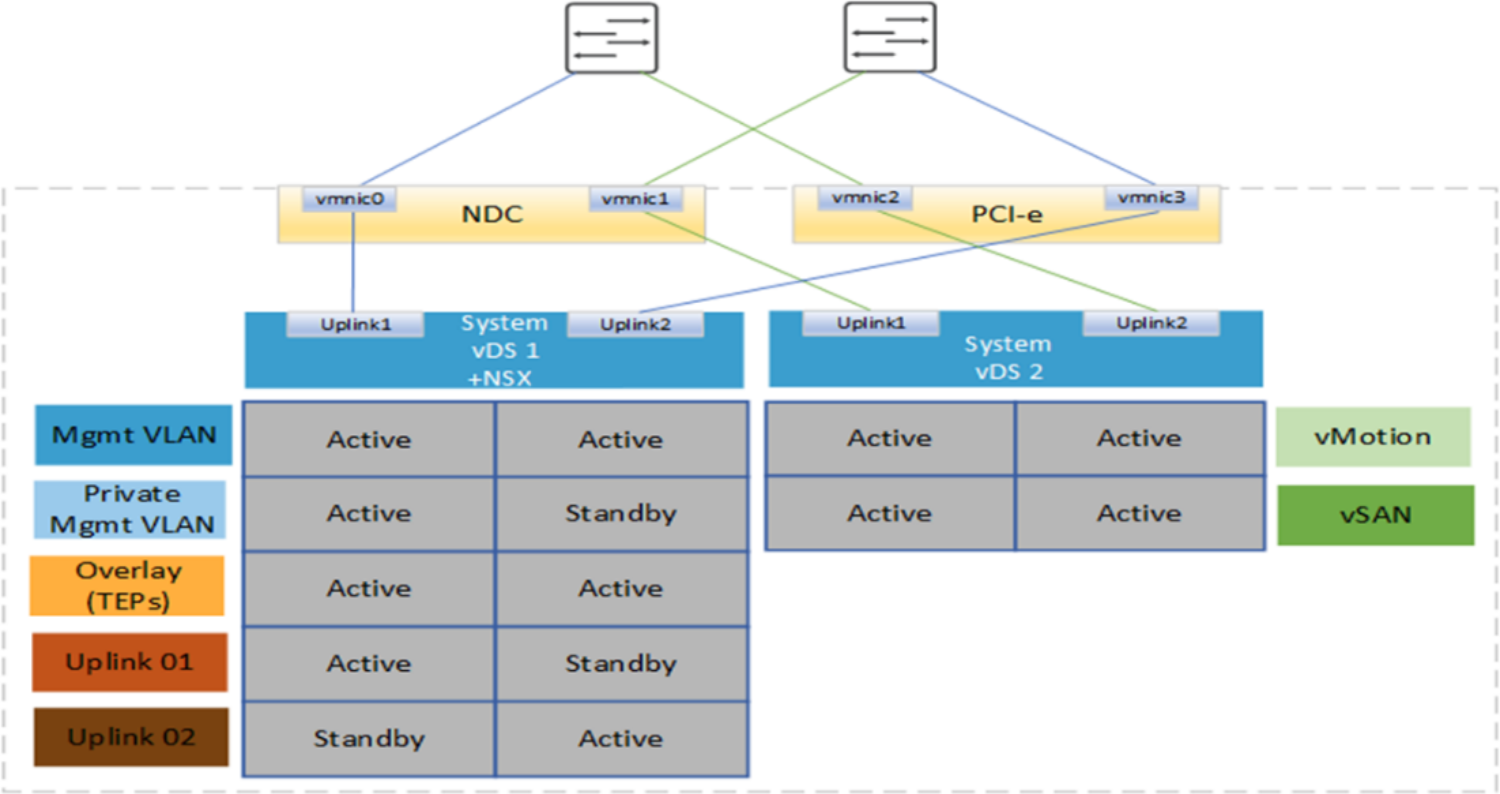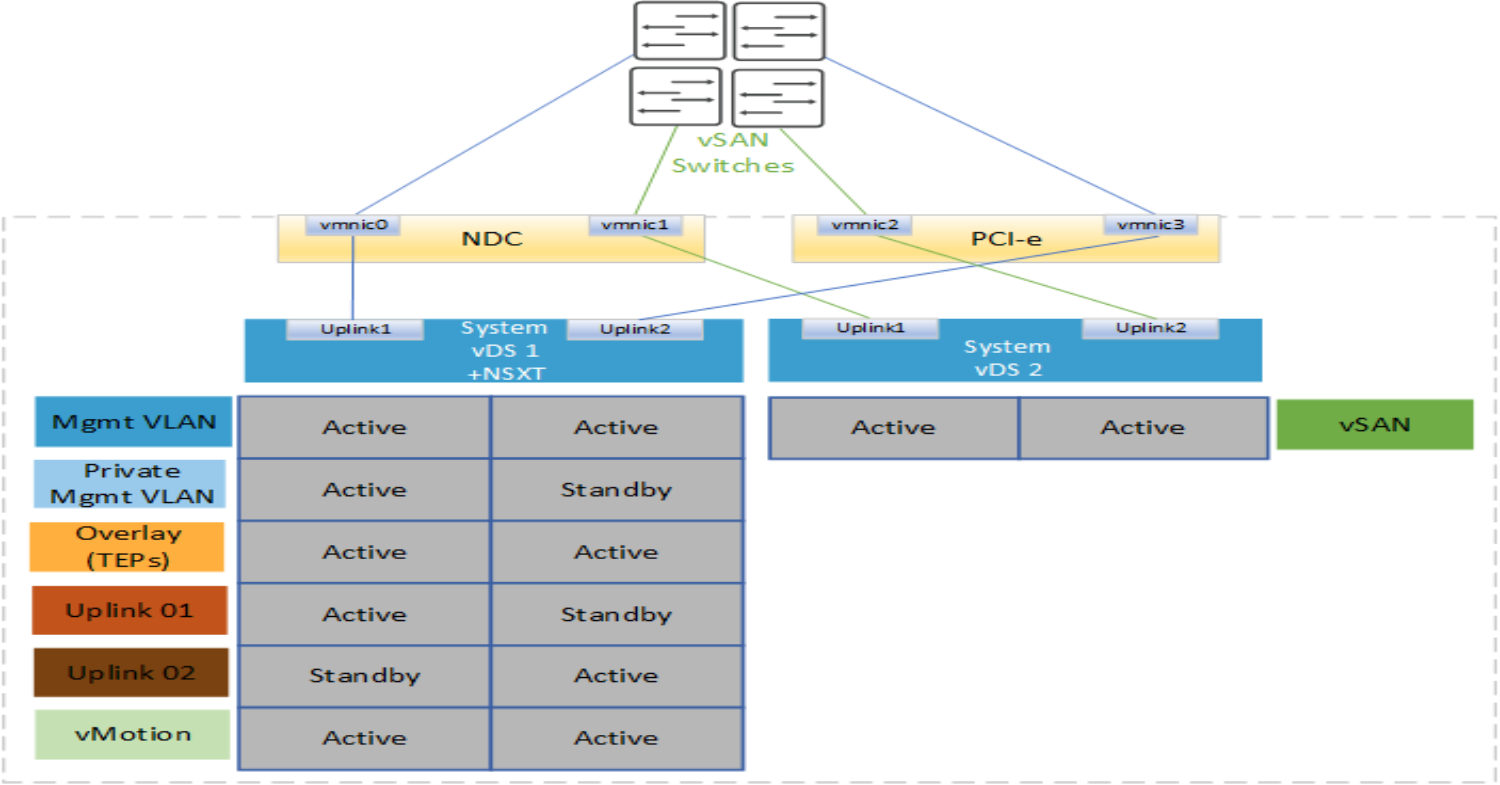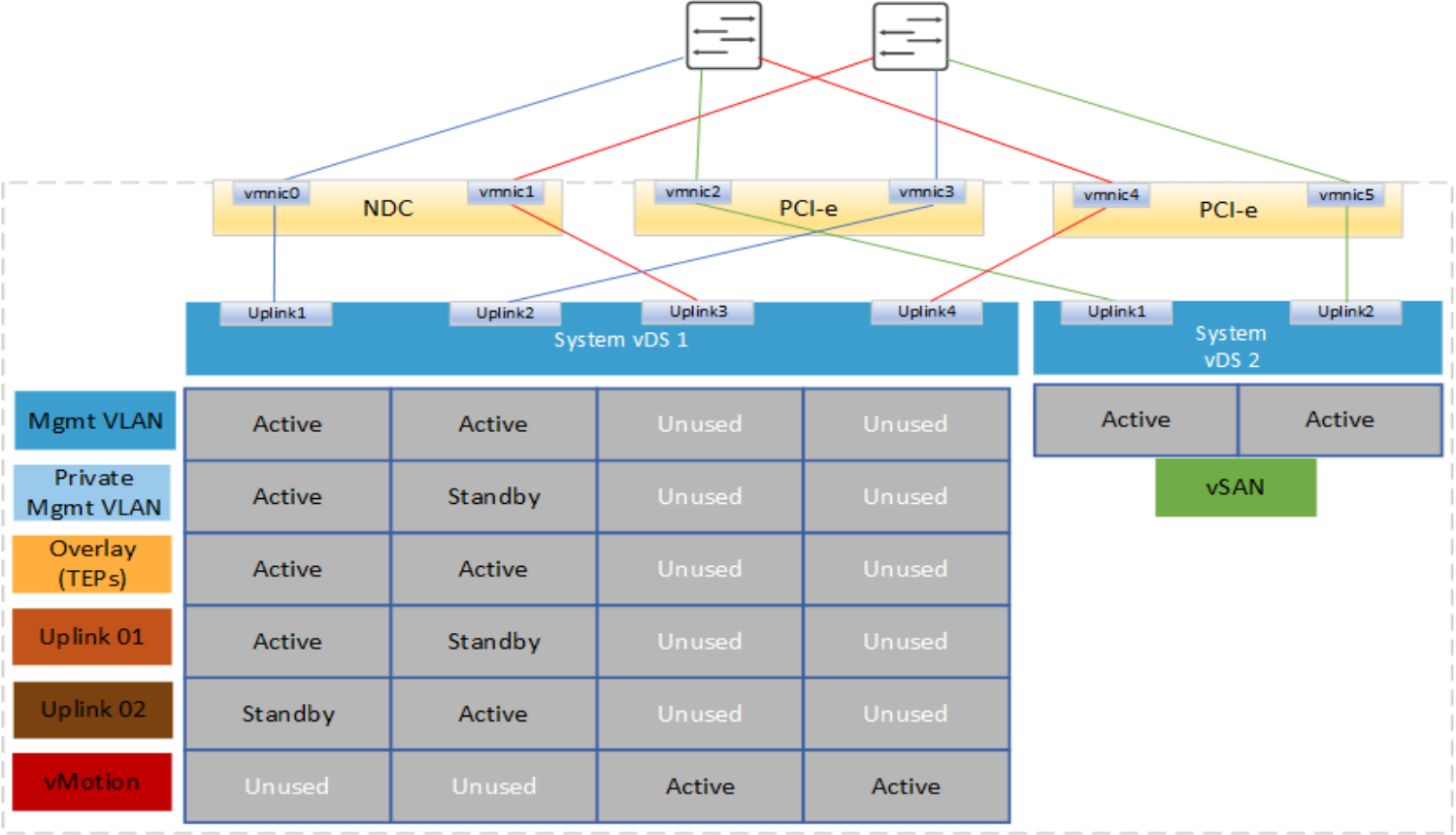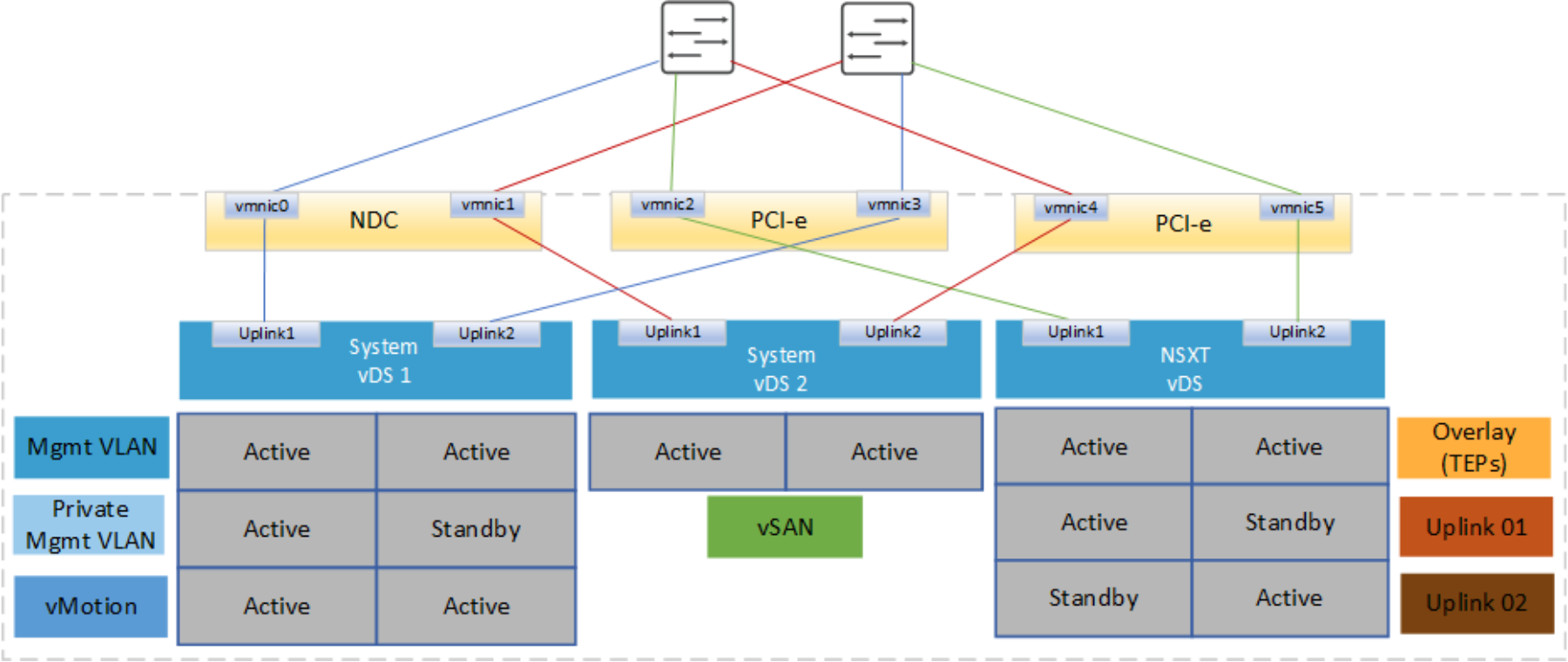Home > Integrated Products > VxRail > Guides > Architecture Guide—VMware Cloud Foundation 5.1 on VxRail > Two system vDS
Two system vDS
-
Starting with VCF 4.3.0, you can have two VxRail system vDS to separate system traffic onto two different vDS. For example, vMotion and external management traffic can be on one vDS and vSAN on another vDS. Either one of the two VxRail vDS can be used for NSX traffic. Alternatively, you can use a dedicated NSX vDS, which results in three vDS in the network design. Sometimes physical separation is needed for management/vMotion, vSAN, and NSX traffic. The three-vDS design provides this capability. This section describes sample topologies.
Two system vDS – four pNIC
In this first example, two system vDS are used. The first vDS is used for management and NSX traffic, the second system vDS is used for vMotion and vSAN traffic. This design also incorporates NIC-level redundancy.

Figure 22. Two-system vDS design with four pNIC
In the next example, vSAN is isolated to a dedicated network fabric. This design might be needed if there is a requirement for physical separation of storage traffic from management and workload production traffic.

Figure 23. Two-system vDS design with four pNIC and isolated vSAN
Two system vDS – six pNIC
Another option is to deploy the first system vDS with four uplinks. This option allows separation of vMotion from management and workload production traffic and allows vSAN on its own dedicated vDS. This option requires six pNICs per host. With VCF 4.3, you can pin the NSX traffic to the same NICs using either management, vMotion, or vSAN on either vDS. In this example, management NICs have been selected on system vDS1, which is the default behavior in the previous release.

Figure 24. Two-system vDS design with six pNIC
Note: VCF 4.3 provides the option to place NSX traffic onto the same two pNICs used for external management, vMotion or vSAN on either system vDS.
A third vDS is required if there is a requirement to isolate NSX traffic and vSAN traffic. In this case, two system vDS and an NSX vDS are required. The first system vDS is used for management and vMotion, the second system vDS is used for vSAN, and the third vDS is dedicated for NSX traffic. This design results in six pNICs per host.

Figure 25. Two system vDS and NSX vDS
